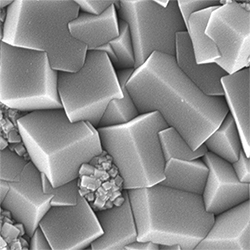Latest News
-

 472017-11-27
472017-11-27Japan Unveils Quantum Neural Network with Online Public Access
Tokyo-based NTT along with the National Institute of Informatics and the University of Tokyo are working on a quantum computing device that exploits the properties of light. Backed with state investment, the quantum neural network (QNN) prototype is reported to be capable of prolonged operation at room temperature.
-

 452017-11-22
452017-11-22PhD student makes groundbreaking discovery that may prevent spread of cancer
A PhD student in Ontario has made a groundbreaking discovery that may have the potential to prevent cancer cells from spreading.
-

 1002017-11-16
1002017-11-16Meet the human guinea pig who hacked his own DNA
‘We no longer have to live with the genetics we had when we were born... even somebody who is uninformed or less informed could effectively create a CRISPR targeting system to a gene with really little effort or knowledge’
-

 1312017-11-12
1312017-11-12Lamborghini creates world’s first ‘self-healing’ sports car
Using sensors the car can conduct its own health check to detect any damages and self-repair itself by filling the crack with nanotubes to prevent it spreading.
-

 472017-11-10
472017-11-10Scientists Armed With Lasers Capture 3D Images of Neurons ‘Firing’ in the Brain in Research Breakthrough
The images are a “huge step forward” in understanding disorders such as autism, schizophrenia and Parkinson’s Disease.
-

 432017-11-07
432017-11-07Researchers develop chip-scale optical abacus
The long-term aim that the researchers have is the creation of so-called neuromorphic computer architectures – i.e. computers which replicate the human brain. One central feature is the elimination of the separation between processor and data storage. “We are also computing with light – and not with electrons, as is the case with traditional computers”
-

 1002017-11-07
1002017-11-07Dotz Nano sells first graphene quantum dots for anti-counterfeiting and optical brighteners
Nano-technology company Dotz Nano (ASX: DTZ) has received its first major sales order for its graphene quantum dots worth A$135,000.
-

 462017-11-02
462017-11-02Malicious code written into DNA infects the computer that reads it
In a mind-boggling world first, a team of biologists and security researchers have successfully infected a computer with a strand of DNA.
-

 1012017-11-02
1012017-11-02IBM Simulates a 56-Qubit Machine
A supercomputer surpasses the proposed limit of using conventional machines to simulate quantum computers
-

 452017-11-02
452017-11-02Tiny Nanoparticles Could Help Repair Damaged Brain And Nerve Cells
Nanomaterials are showing great potential in biomedicine since they can interact precisely with living systems down to the level of cells, subcellular structures and even individual molecules.
-

 402017-11-01
402017-11-01Rutgers-led research could revolutionize nuclear waste reprocessing and save money
A ‘Molecular Trap’ for Capturing Radioactive Iodides in Nuclear Waste
-

 412017-11-01
412017-11-01Graphene enables high-speed electronics on flexible materials
Terahertz radiation has a wide range of uses and can occur in everything from radio astronomy to medicine. The term refers to the electromagnetic waves whose frequencies range from 100 gigahertz to 10 terahertz. Demand for higher bandwidth in wireless communications and depiction for security applications has led to intensified research on systems and components intended for terahertz frequencies.










